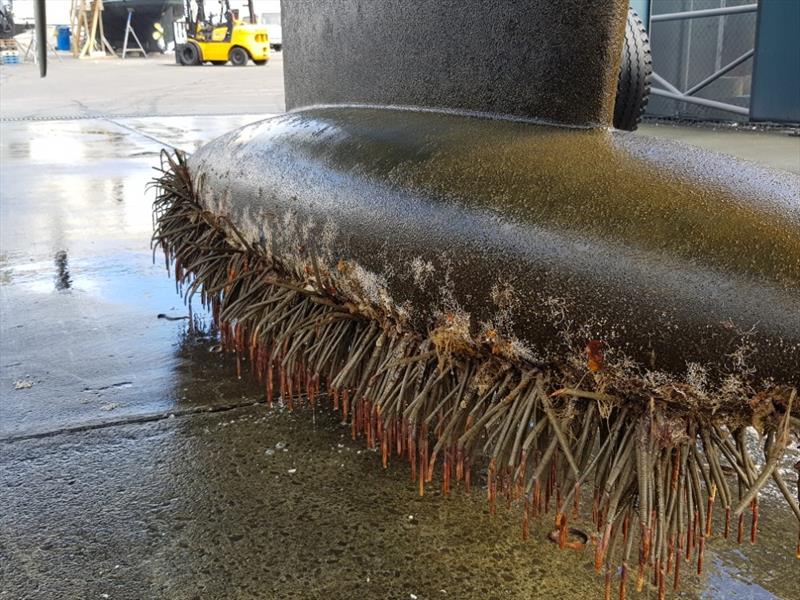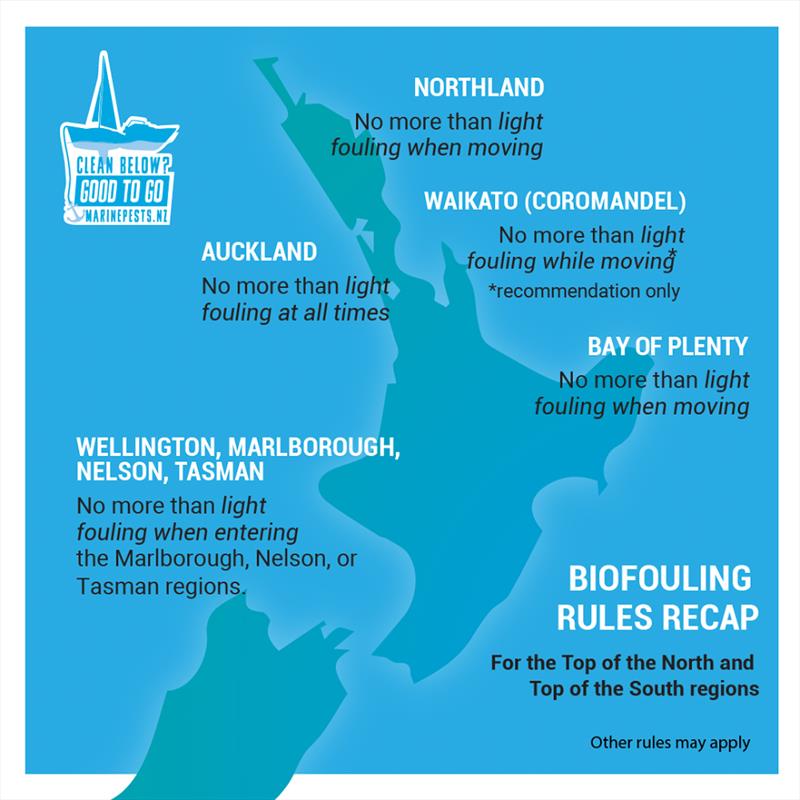
Updated guide to preventing the spread of marine pests in NZ
by Marinepests.nz 28 Dec 2024 01:23 NZDT

Plants and animals can accumulate as biofouling on any underwater surface © Marine Pests NZ
Making sure your boat is clean before travelling from place to place isn’t always easy, but it’s important.
A dirty hull doesn’t only cost you in fuel and speed - it can also be a haven for marine pest hitchhikers that can travel on our hulls, anchors and equipment, and cause havoc in the coastal places we love.
Many regions - and some marinas - have rules about hull hygiene and biofouling, and more recently, restrictions related to exotic caulerpa have been added to the mix affecting all boats, including those on trailers, jetskis and kayaks.
We don’t want you getting turned away from your destination, so here is some useful info from the experts to help you stay on top of marine biosecurity rules.

Marine growth fouling rules are simply explained in this guide - photo © Marine Pests NZ
What are marine pests?
Plants and animals can accumulate as biofouling on any underwater surface. Sometimes, these hitchhikers are invasive species, known as marine pests, which travel with us to our favourite spots. This includes species like Mediterranean fanworm, Australian droplet tunicate and Asian kelp/Undaria. Some species, including exotic caulerpa, Asian paddle crab, and Clavelina sea squirt can travel as larvae, juveniles or small fragments attached to our gear. While they can sometimes also disperse in currents, they move further and faster when they hitch a ride aboard our boats.
Hull grooming a focus for moored boats
Hull grooming is the new buzzword for boats that live in the water all the time, says marine biosecurity advisor Sam Happy of Auckland Council.
“This means regular hull grooming - antifouling and cleaning with special attention to props and niche areas.”
While most regions have slightly different rules relating to biofouling, she says that ensuring your boats hull has no more than a light layer of slime onboard, means you’ll be good to go wherever you are.
She recommends becoming familiar with the Level of Fouling (LOF2) scale which is now in wide use throughout New Zealand and being adopted abroad.
“If you are getting close to LOF 2, it’s time to arrange a clean, making sure you really pay attention to those hard-to-get-to spots like the keel bulb and intakes that can be easy to miss.”
She says it’s especially important to do before you head away - whether it’s to an island close by or somewhere much further afield. “Just like mice or skinks can jump onboard, it would be easy to carry marine pests with you, you likely wouldn’t even know they were onboard.”
Some marinas have rules too
Many marinas, including those in Northland, the Coromandel and Bay of Plenty, may ask you to take extra steps. For example, Whitianga Marina has strict rules to help keep Mediterranean fanworm out, because if it gets into the marina, its next stop could be the gorgeous fanworm-free Coromandel coast.
To visit these marinas you may need to provide evidence (i.e. receipts) of either an antifoul within the previous six months, or a lift-and-wash within one month of leaving an area infected with marine pests. They might ask for details of where you have been recently, and if you are coming from a risky area, even get you to haul out on arrival.
All boats: check and clean your in-water gear
All boats, from humble kayaks to superyachts, should be aware that pests can spread as small fragments on in-water gear and equipment. This includes exotic caulerpa, the newly discovered red seaweed Asparagopsis taxiformis, Asian paddlecrab, and others.
Sam recommends that boat owners make a habit of checking their anchor, chain and gear for any weed before moving locations. Anything found should be ‘bagged and binned’ or if that isn’t possible, only ever dropped back in the same location it came from. “Doing it before you move is key, so that you don’t take it with you,” says Sam.
“If you are visiting anywhere that exotic caulerpa has been found, or close to where it has been found, please do some research before you go to ensure you are familiar with the locations, what to do if you find it, and the legal restriction including places where you can’t anchor or disturb the seafloor”
You can find out everything you need to know about exotic caulerpa in New Zealandon the Biosecurity NZ website www.biosecurity.govt.nz/caulerpa
Boat owners can find out about the marine pest rules and get more tips and information by visiting www.marinepests.nz/rules This story is bought to you by marine biosecurity partnerships in the Top of the North and the Top of the South.